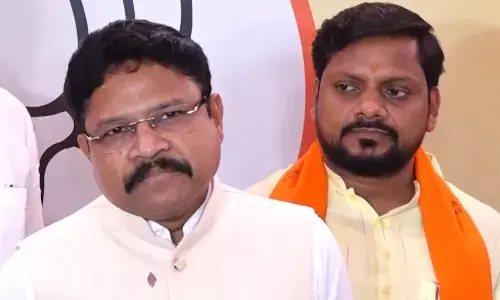Art and culture reduced to a spectacle: Performing artistes

Indian culture and art forms that have preserved their core traditions for millennia are being reduced to a mere \"spectacle\" today in the race to keep up with the fast changing times, according to leading art practitioners. At an open discussion organised by the Raza Foundation in collaboration with the Civil Services Officer
Indian culture and art forms that have preserved their core traditions for millennia are being reduced to a mere "spectacle" today in the race to keep up with the fast changing times, according to leading art practitioners. At an open discussion organised by the Raza Foundation in collaboration with the Civil Services Officers' Institute recently, a panel consisting of renowned architect Vikram Lall, Bharatanatyam dancer and Guru Rama Vaidyanathan and poet and film writer Udayan Vajpeyi discussed the concept of "Novelty in Performing Arts". Lall, who designed Delhi's Akshardham temple and Patna's Buddha Smriti Park, said that India is renowned for its musical and other art traditions that have evolved over time, but these continue to have a thread that ties them across centuries.
"In architecture, we talk about transforming ideas and not transferring them. Change and innovation is what make art forms survive," he said. However, the modern tendency of making a show and a spectacle out of everything is diminishing both art and the idea of innovation, he added. "A spectacle presumes a stupid audience," said Udayan Vajpeyi. He noted that the 'rasik' or the appreciative audience member, is an integral part of an Indian performance or concert. "We tend to copy the West mindlessly in so many things. For instance we dim the lights in a concert hall for a classical music performance, but in India the artiste responds to the audience, they improvise according to audience reaction, it is spontaneous." He said the novelty in Indian art forms comes from the teaching of the art. Western traditions aim for sameness, but the Indian guru lets the disciple learn according to their own understanding and disposition, which is a great method of learning and encourages innovation.
Dancer Rama Vaidyanathan said artistes have to look beyond the classroom, the gharanas and traditions and will have to free themselves from these shackles to bring freshness to their art. "For a dancer, novelty does not happen forcefully or overnight. It comes after years and years of creating dialogues with the dance form and with practice. "This lays the foundation to create new things and push boundaries. It is an organic process and it is good for the art form. When I work with Kathak or Odissi artistes, I learn things," Vaidyanathan said. "I have to look beyond my dance form to create something new in my dance form. But that does not mean you are abandoning the core principles of your dance form, because it is already a part of who you are." She said she hopes to make dance secular, transcending the boundaries of cultures and religion, and use it as a medium to address social issues.















